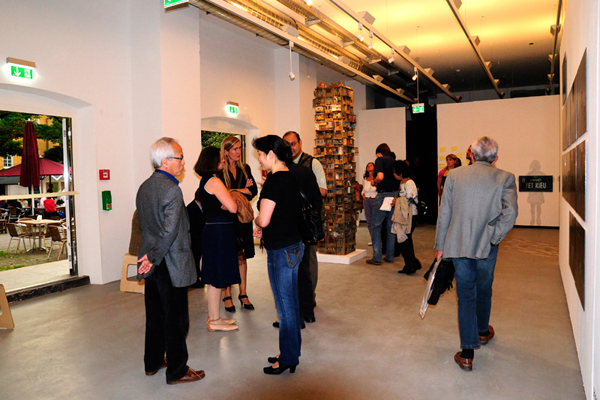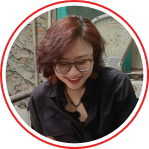When Vietnamese painter Tran Luong tried to take a group of students to China last year, his aim was to find artistic inspiration.
Instead he found censorship, when the culture police confiscated his materials and refused to let him leave Vietnam.
He is not the only contemporary artist or writer to fall foul of the ruling Communist Party’s strictures.
Performance artist Dao Anh Khanh has had several shows cancelled, while prominent young writer Do Hoang Dieu found her work was greeted by a storm of criticism.
None of the three has produced anything overtly political, but their portrayal of subjects outside the traditional themes of love for family and nation was enough for the authorities to clamp down on them for being potentially subversive.

Franz Xaver Augustin, the director of Hanoi’s Goethe Institut, said that while Vietnam was undoubtedly changing in terms of its economy and global outreach, changes in politics and culture were happening at a much slower pace.
“In Eastern Europe the art scene was the backbone of the movement to topple the old regime, but that’s not the case here,” he said.
“There are very few artists who are really dissidents, and even then they are extremely cautious about what they do.”
In fact, many of Hanoi’s contemporary artists and writers feel that Vietnam is less advanced in terms of artistic freedom than neighbouring communist China.
“An artist in China can have a different view about a leader like Mao, and still their work will be accepted,” said Dao Anh Khanh. “You couldn’t do that here with [Vietnamese hero] Ho Chi Minh.”
“China is far more open than Vietnam,” added Tran Luong. “We can’t compare with them.”
Lack of explanation
In many ways, though, the government lets its citizens have a fair amount of freedom. The media is still tightly censored, but life for Vietnamese people – apart from the country’s few acknowledged dissidents – is not noticeably more restricted than in other South East Asian nations.
That is why many of those who write, draw and perform in the country are at a loss to explain why the work they do is considered so dangerous.
“The authorities never told me why they stopped me going to China,” said Tran Luong. “I think they were just trying to say they were in control.”
“I never expected that my work would be so controversial,” added Do Hoang Dieu, who writes mainly about the legacies of Vietnamese history.
“My major theme is that this country is still living under the shadow of the past,” she said. “But I’m not writing stories to raise a particular issue.”
Dao Anh Khanh should know better than most people what the ruling party fears from such forms of contemporary art and literature.
Before becoming a performance artist, he spent 18 years in the police force – most of which he served in the cultural police.
“We had to monitor artists and make them stick to strict guidelines,” he said.
“I felt nervous because I didn’t know what was wrong with what I saw. I don’t think the authorities did either. Maybe they’re just scared of anything being different.”
Betrayal
Vietnam remains a very conservative country, and this is reflected in its art.
“To criticise anything that’s happening here is not seen as good behaviour,” said Mr Augustin. “It’s seen almost as a betrayal of your country.”
Most writers therefore stick to upbeat works about Vietnamese life, while artists produce traditional images of happy families, agricultural scenes or paintings depicting nature and beauty.
Another popular form of art, at least as far as the government is concerned, is the production of propaganda posters.
The amount of government support given to people engaged in such activities is noticeably greater than that given to contemporary artists.
But, as in many other areas of Vietnamese life, the situation is slowly changing.
Artists who left the country a few decades ago, because of the cultural restrictions, are now coming back, and according to Mr Augustin there is a new generation of young Vietnamese artists eager to break new boundaries.
Do Hoang Dieu acknowledges that even though her work has caused controversy, it would have been far worse if she had written her stories a few decades ago.
“If my writing had been published 10 or 20 years ago, I wouldn’t have the freedom to remain here in Hanoi,” she said.
‘Art thirst’
Even Tran Luong, still angry about the restrictions put on him last year, has started to work with the government on a new contemporary art project opening soon in Hanoi.
Meanwhile, a large international exhibition called Saigon Open City has just begun in Ho Chi Minh City, to promote awareness of contemporary work.
As Dao Anh Khanh says, there is certainly a thirst for new forms of artistic impression in Vietnam, if the government will open up enough to let such art forms exist.
“I don’t need to advertise what I do – people just tell each other and I get plenty of people coming anyway,” he said of his live performance shows.
“Everyone in Vietnam is hungry for something new.”





